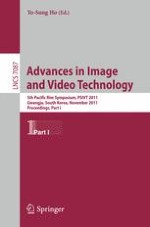The two-volume proceedings LNCS 7087 + LNCS 7088 constitute the proceedings of the 5th Pacific Rim Symposium on Image and Video Technology, PSIVT 2011, held in Gwangju, Korea, in November 2011. The total of 71 revised papers was carefully reviewed and selected from 168 submissions. The topics covered are: image/video coding and transmission; image/video processing and analysis; imaging and graphics hardware and visualization; image/video retrieval and scene understanding; biomedical image processing and analysis; biometrics and image forensics; and computer vision applications.
